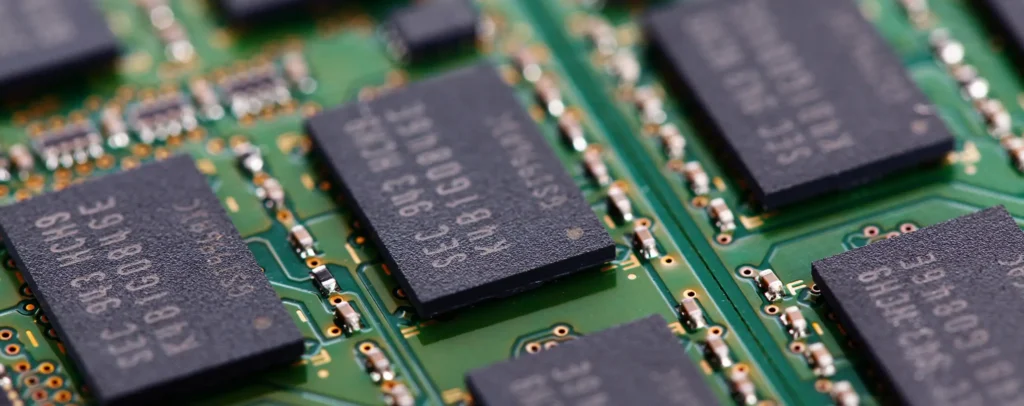
Windows 11 requires a Trusted Platform Module (TPM). This hardware requirement has left many wondering – what exactly is a TPM and why is it so important?
Your computer’s TPM chip is a behind-the-scenes security powerhouse, protecting your data and privacy. Find out what this essential component does and why Windows 11 requires it.
What if your computer had its own built-in bodyguard, standing by to fend off attacks and keep your sensitive information safe? It does – if your PC contains a small chip called the Trusted Platform Module (TPM).
You may never have heard about TPMs before, but they play a huge role in locking down modern computers against infiltration. Read on to learn all about what TPMs do, why Windows 11 insists your system must have one, and how activating this hidden helper ushers in a big upgrade in security.
Let’s start with the basics.
What Exactly is a TPM?

A Trusted Platform Module (TPM) is a microchip designed to provide hardware-based security and encryption functions to safeguard sensitive data.
Essentially, a TPM serves as a secure crypto processor managing encryption keys and providing a hardware root-of-trust. This makes it much harder for attackers to access private keys or tamper with critical system components.
The TPM specification is defined by the Trusted Computing Group (TCG), an international standards body focused on hardware-embedded security technologies. They created the TPM standard to establish a common security baseline for personal computers and devices.
There are two major TPM standards currently:
- TPM 1.2: Released in 2011, version 1.2 added enhanced authorization and policy controls.
- TPM 2.0: The latest major version released in 2014, TPM 2.0 added additional cryptographic agility along with algorithms and self-encryption capabilities.
Now that we’ve covered the basics of what a Trusted Platform Module is, let’s explore why TPMs are so vital for security.
Key TPM Security Capabilities and Use Cases
TPMs provide a wide range of built-in cryptographic security functions, including:
- Secure key generation and storage: TPM chips feature tamper-resistant storage for securely housing computer-generated encryption keys. Private keys remain securely confined within the TPM hardware.
- Hardware authentication: The TPM provides a hardware root of trust that uniquely identifies the device. This allows for trusted boot and authentication validating that the hardware configuration is secure.
- Disk encryption: Full-disk encryption tools like BitLocker rely on the TPM to secure encryption keys. The key is sealed to the TPM, unlocking access to encrypted data.
- System integrity validation: Secure Boot utilizes the TPM and platform key along with UEFI firmware to authenticate booting software. This verifies boot components haven’t been tampered with before launching the OS.
- Digital rights management (DRM): Content protection mechanisms often rely on hardware-based security. TPMs can be used to enforce usage polices and licensing restrictions for copyrighted media or software.
As you can see, TPMs play an indispensable role in securing modern computer systems against sophisticated security threats. That’s why Microsoft made the decision to require TPM 2.0 compatibility for Windows 11.
Why Do You Need a TPM for Windows 11?
Microsoft mandated TPM 2.0 support for all Windows 11 devices as part of their strict new hardware security requirements. But why did they make this controversial decision?
Essentially, Microsoft wanted to establish a universal baseline for security capabilities across all Windows 11 hardware. Requiring modern TPM 2.0 functionality allowed them to harden platforms against emerging attack vectors like:
- Firmware attacks
- BIOS vulnerabilities
- Ransomware and boot record manipulation
- Supply chain attacks
By leveraging advanced TPM capabilities like hardware-based root of trust, secure encryption key generation, protected execution environments, and policy-based access control, Microsoft could offer assurances to enterprise customers regarding the trustworthiness of Windows 11 platforms.
While controversial, this decision establishes a foundation for Microsoft to keep innovating Windows security protections well into the future. And ultimately, that benefits all users across consumer, business, and governmental environments.
TPM 2.0 – Key Improvements Over TPM 1.2
Now you understand why TPM adoption is so critical for improving Windows security. But why did Microsoft decide to mandate TPM 2.0 specifically versus older standards like TPM 1.2?
TPM 2.0 builds significantly upon previous TPM specifications by:
- Expanding cryptographic agility with asymmetric encryption support for ECC along with RSA encryption schemes
- Enhancing authorization components
- Adding TPM self-encryption for protecting keys/secrets even when tampered with or stolen
- Incorporating algorithm flexibility to meet future security standards
- Hardening against physical attacks through defensive cryptography innovations
These capabilities allow TPM 2.0 to deliver vastly improved hardware security tailored towards today’s advanced persistent threats. That’s why Microsoft aligned Windows 11 requirements with the latest ISO/IEC TPM standard.
How to Check If You Have a TPM
Now that you grasp the critical importance of TPM hardware for security, let’s explore some quick ways to check if your Windows PC has an enabled Trusted Platform Module.
You have a few different options to validate TPM support:
Through System Information
The easiest approach involves checking Windows System Information:
- Go to Start and search for “System Information”
- Under System Summary, check for a “TPM: 2.0” listing to confirm TPM support
If you see 1.2 instead of 2.0, or get a “TPM Not Detected” error, then your device likely lacks TPM 2.0 compatibility required for Windows 11.
Through Device Manager
You can also validate TPM functionality via Windows Device Manager:
- Open Device Manager
- Expand the Security devices category
- Look for a “Trusted Platform Module 2.0” listing to verify Windows recognizes TPM support
Sometimes TPM modules can show up as “Trusted Platform Module 1.2” listings instead. Again, confirming you have a 2.0 trusted platform module is key.
Within System Firmware
Lastly, it’s worth double checking that TPM hasn’t been disabled within your UEFI/BIOS firmware settings:
- Reboot your computer into UEFI/BIOS setup
- Find the TPM settings (under security, advanced, or trusted computing categories)
- Confirm TPM hasn’t been disabled and instead is set to an enabled/active state
On older systems, you may need to explicitly enable TPM support in firmware for Windows to recognize the trusted platform module.
Initializing and Taking Ownership of the TPM
Once you’ve verified TPM 2.0 support on your Windows PC, the next step involves initializing the trusted platform module and taking ownership to activate its full cryptographic capabilities.
Initialization prepares the TPM on first use, while taking ownership establishes exclusive control by the operating system and hardware owner for security purposes.
Luckily, Windows 11 automatically handles both these steps during installation so no manual TPM configuration is necessary. Windows 10 will also initialize and take ownership of the TPM automatically when setting up BitLocker.
In the event of a manual upgrade from Windows 10 to 11, initializing the TPM may be required. You can do this through the Clear-TPM PowerShell command.
However, for most consumer systems upgrading from Windows 10 to Windows 11 initialization isn’t necessary. The TPM capabilities simply carry over from your prior Windows installation.
Still No TPM? Here Are Your Options for Accessing Windows 11
If your TPM status still shows an older 1.2 or earlier version, don’t panic yet. You still have options for ultimately upgrading to Windows 11 without buying a completely new device. Here is a quick rundown:
- Enable TPM Support in Firmware – Many PCs with TPM chips had features disabled by default that must be manually activated in the firmware settings during boot up.
- Install a Discrete TPM Module – An easy plug-in hardware upgrade, discrete TPM modules often cost less than $50 and connect via internal USB ports.
- Perform a Clean Install on Supported Hardware – This fresh Windows 11 install erases all local data but fully supports the latest TPM requirements.
Final Words
At the end of the day, while TPMs provide crucial hardware backing for Windows protections, Microsoft still overreached mandating such relatively new technology. Especially considering most real-world software vulnerabilities stem from flaws in code itself.
Hopefully the clarity provided here around what TPMs actually do — along with various upgrade paths — help you breathe easy knowing your existing PC investment remains protected. Windows 11 delivers only incremental improvements for most practical uses making it hardly worth the cost of replacement hardware for TPMs alone.
Read More :-
